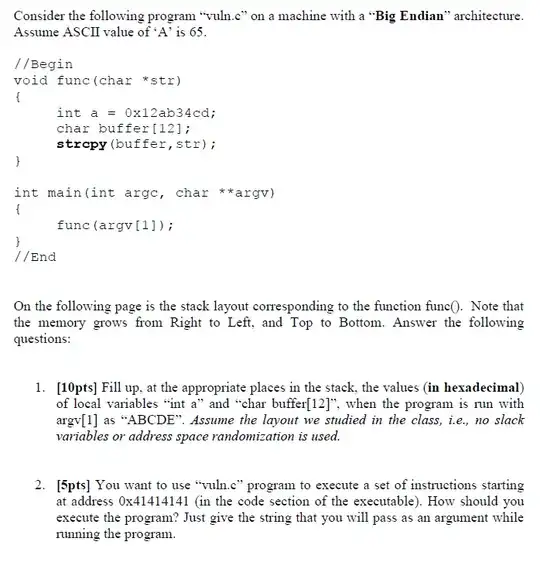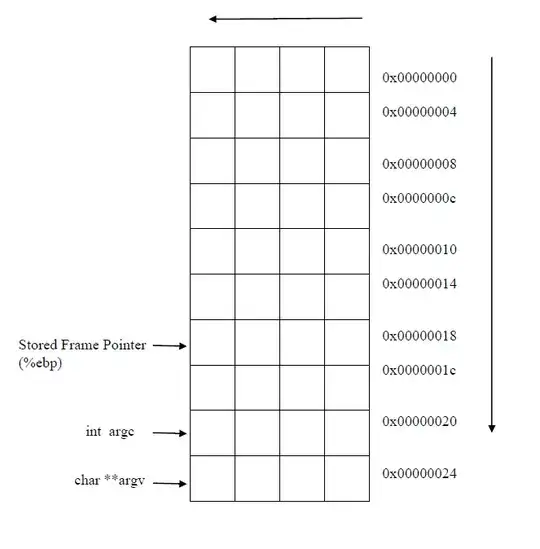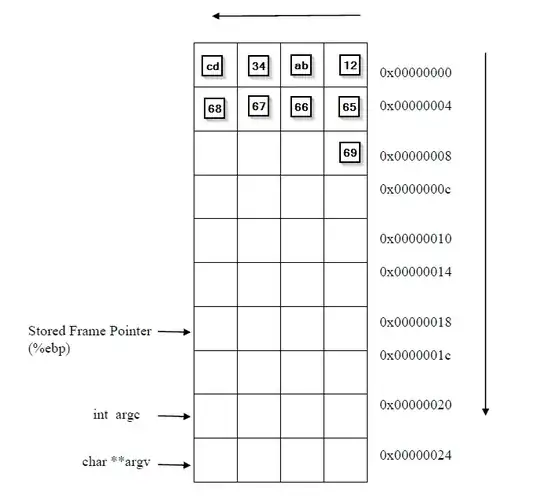The stack grows "downwards", i.e. from high addresses to low addresses. In the stack diagram that you are supposed to fill, addresses are "reversed" (address 0x00000004 is below address 0x00000000, not above it), so, in that diagram, the stack grows "up".
(The point to understand here is that there is no notion of gravity in the computer; the "up" and "down" are relative to a conventional direction, which may be that of a table on a piece of paper, or that of numerically growing address values, or whatever. Here, the table indicates addresses explicitly, with arrows that confirm the convention.)
So the 0x12ab34cd word (local variable a) should appear at addresses 0x00000014 to 0x00000017, immediately above the stored frame pointer. The buffer array is then immediately above that (addresses 0x00000008 to 0x00000013).
While the stack grows towards "low" addresses (the stack pointer is decremented when a value is pushed on the stack), the buffer is ordered towards "high" addresses (buffer[0] is at address 0x00000008, buffer[11] is at address 0x00000013).
That the machine is "big-endian" matters only for the ordering of bytes within a single word. It does not impact the order of appearance of words within the stack. Said otherwise, that the stack is "growing down" is not a consequence of the machine being "big-endian".
(Note: there have been some architectures with stacks "growing up" but they are quite uncommon these days, and the exercise would make no sense with a "growing up" stack.)


